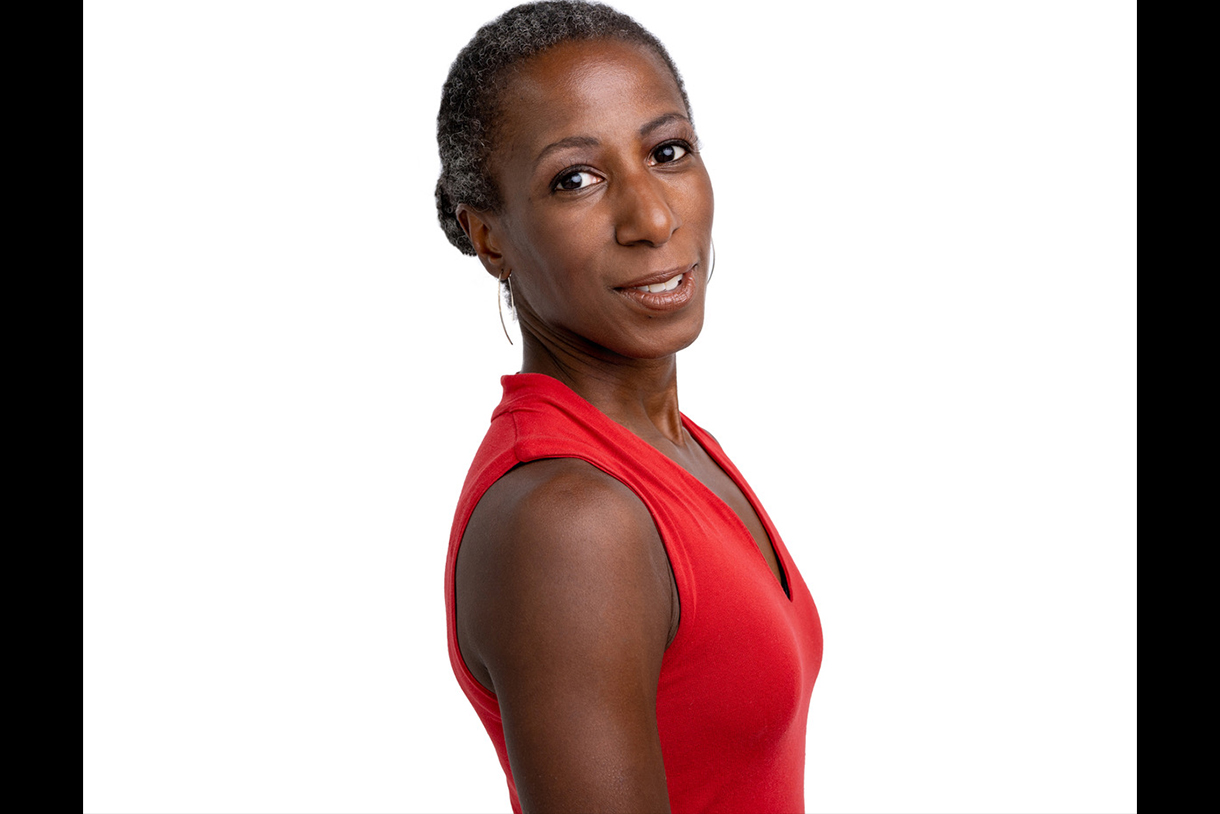Taking the Dance Path
 Keesha Beckford
Keesha BeckfordColumbia Dance faculty member Keesha Beckford found dance at the age of two. Once she started dancing, she never stopped, making dance a major part of her identity and her path. Since 2006, she’s been helping make it a part of many Columbia students’ paths as well in Dance courses focusing on modern, contemporary, ballet, and jazz.
Where did you study dance?
I began studying dance at Studio E, a small neighborhood school in Queens, New York where I grew up. Many of our teachers were professional dancers studying and working in Manhattan. This is a common phenomenon, where professional dancers trek out to the suburbs or into the outer regions of a city to supplement their income. The school was a great incubator for talent as several of us have gone on to have professional careers in dance. When I was 14, I received a scholarship to study at Steps on Broadway in Manhattan where I supplemented my jazz, ballet, and tap classes at my studio. I continued studying dance at Princeton University where I earned a certificate in dance and won the Louis Sudler Prize in the Arts presented annually to a graduating senior who has demonstrated excellence in performance, execution, or composition in one of the arts.
What is your favorite music to dance to?
I don't have a favorite music to dance to. It's really about whether the music brings out or helps me access qualities or feelings that I want to convey in the moment or in my teaching or choreography. I'll use anything from classical to jazz to classic rock to pop, really anything. Right now, I'm working on a piece for my Conservatory students at Joffrey to an absolutely gorgeous version of Led Zeppelin's Kashmir performed by a Japanese string quartet called Yamoto. They performed the work in Morocco, so it has kind of Middle Eastern/North African influences. It's just an amazing piece of music. But if you want to know about my favorite music to just dance around the house to it's definitely ‘70s and ‘80s disco. There's nothing better than that to me! I guess it takes me back to when I was young and naïve.
What/who are your influences?
I learn something every time I see any company perform, but there are major influences such as The Alvin Ailey American Dance Theater. I love their ability to communicate—really speak— with so many dance forms – ballet, modern, contemporary, jazz, hip-hop, West African. I have always loved Hubbard Street Dance Chicago. I idolized Debbie Allen as a child and saw every 80s jazz dance movie there was. But I suppose my real influences are teachers and choreographers whose work has shaped me and whose body of work I have shaped in turn (the choreographers at least)—teachers like Max Stone in New York, and everyone’s Ballet Mother here in Chicago, Birute Barodicate. Also, Choreographers Teri and Oliver Steele, Amy Marshall, and my colleague in the Dance department Paige Cunningham Caldarella.
Can you tell us about any current projects you are working on or past projects you are most proud of?
Right now, I am working on a few writing projects that I am very excited about. Writing is my second vocation. Dancewise, my most favorite recent past project was a dance on film titled On The Verge choreographed by Paige Cunningham Caldarella and directed and edited by Jess King. I love the physicality of the movement, the deep physical and emotional connection I had with the other dancer—the amazing Jess Duffy, and it was one of the last times I felt in shape and happy with what I could do as a dancer. Sigh.
What advice do you have for anyone who would like to pursue Dance or for students already pursuing Dance?
Competition is fierce in the dance world, even more so for female identifying dancers. You need to treat yourself like a business—you have to nourish, maintain, and grow the business, but you also have to honor your obligations and be professional. Respond to communication, show up on time, ask the right questions, find the right advisors/mentors, and say no if something isn’t right. The showing up is so important. Self-care is a long game—it isn’t just couch time, facials, and bubble baths, but it’s also ensuring that you are building a reputation because so much of this business is about connections. Everyone knows everyone. As artists we are in a never-ending balancing act between very necessary rest and nose-to-the-grindstone hustling. Second, know your instrument, developing an acute sensitivity to what your body is doing, so that you can feel the connections between your bones and muscles and fascia, etc. inside your skin and where your physical person is in space. Do not merely emulate, learn to feel. Practice the corrections you receive. You can work on your core engagement or work on deep muscles in the back or pelvis or feet while waiting for the bus or online at Trader Joe’s and no one’s any the wiser, except you, of course. Journal about the feedback you’re getting and ask questions about corrections you don’t understand. Always be an artist. Really, I should have just pointed you to this article I wrote several years ago. Third, go see as much dance as you can. Let that be a joyful study for you.
MEDIA INQUIRIES
Daisy Franco
Communications Manager
dfranco@colum.edu
Recent News
- Columbia Holds Sixth Annual Hip-Hop Festival
- 5 Questions with Columbia Alum and Trustee Staci R. Collins Jackson
- Anchor and Reporter Paige Barnes ’21 Found Stories Worth Telling at Columbia
- Make Columbia Part of Your Holiday Season: Watch Alum Movies and Shows
- Fashion Design Alum Shaquita Reed ’18 Expresses Herself Using Different Mediums